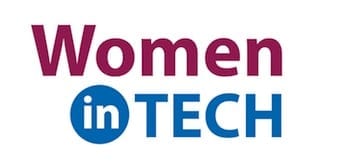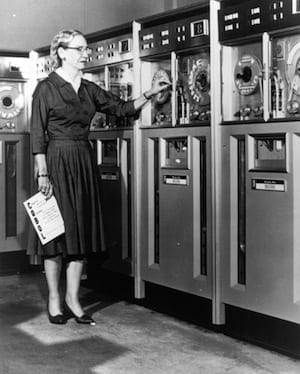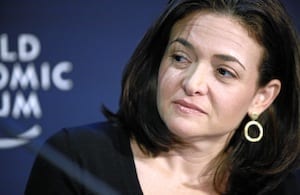 March is the month of St. Patrick’s Day, the start of spring, and when swimsuits are already sold out as a result of those who have been wistfully dreaming about spring break since December. But more importantly, March is also Women’s History Month. This celebration began in 1981 as “Women’s History Week,” and was designed to honor the generations of women who have made significant contributions to society. The event was changed to “Women’s History Month” in 1987 when Congress decided there were “way too many influential women to recognize in just one week!” (Okay, so that’s not the actual legislative text, but the correct sentiment is there).
March is the month of St. Patrick’s Day, the start of spring, and when swimsuits are already sold out as a result of those who have been wistfully dreaming about spring break since December. But more importantly, March is also Women’s History Month. This celebration began in 1981 as “Women’s History Week,” and was designed to honor the generations of women who have made significant contributions to society. The event was changed to “Women’s History Month” in 1987 when Congress decided there were “way too many influential women to recognize in just one week!” (Okay, so that’s not the actual legislative text, but the correct sentiment is there).
As part of our ongoing “Women in Tech” blog series, we wanted to recognize influential women in the STEM (Science, Technology, Engineering, and Math) fields, both past and present. Women have always made and will continue to make significant contributions to these fields. Our intention is that these short biographies will inspire those considering a STEM field to pursue their own passions.
Grace Hopper, COBOL, and the “Computer Bug”
Grace Hopper was considered one of the first computer scientists. Born in 1906, Grace was always fascinated with mechanics and would often take apart her family’s clocks and other gadgets around the home to examine how they worked. When she was older, Hopper followed her passions and attended Vassar College to study mathematics, physics, and engineering. She graduated in 1928, and then attended Yale where she received a master’s degree in 1930 and a doctorate in 1934. Upon graduation, Vassar College hired her first as an instructor, then a professor of mathematics.

She remained a professor until 1943 when she joined the US Naval Reserve and was assigned to the Bureau of Ships Computation Project at Harvard. According to Encyclopedia.com, Hopper was tasked with “devising a machine that would assist the Navy in making rapid, difficult computations for such projects as laying a minefield.” They created America’s first programmable digital computer—the Mark I. Though Hopper was intimidated at first because she had no background in computing, she applied her knowledge of mathematics and mechanics and got to work.
Perhaps one of the most famous stories about Hopper involves the creation of the terms “bug” and “debugging” in terms of computer vocabulary. According to Encyclopedia.com, “After encountering a failure while developing the Mark, Hopper discovered a moth in a faulty relay. The insect was removed and fixed to the page of a logbook as the “first actual bug found.” As a result of this event, the creation of these terms is attributed to Hopper.
Hopper left Harvard in 1949 to be a senior mathematician at a start-up company, the Eckert-Mauchly Computer Corporation. In 1957, Hopper and her staff created Flow-matic, the first program using English language words. Flow-matic was later incorporated into COBOL, or “Common Business Oriented Language.” The benefits of COBOL included its readability and portability as well as its ability to be used on many different computers.
Hopper was before her time in developing this technology, and her contributions to the computing field are undeniable.
Sheryl Sandberg of Facebook and Google
Sheryl Sandberg is the current COO of Facebook. Born in 1969, Sandberg attended Harvard College and graduated in 1991 with a degree in economics. She later earned her MBA in 1995 from Harvard Business School.

From 1996-2001 Sandberg served as Chief of Staff to the United States Secretary of the Treasury, Larry Summers, under president Bill Clinton. She joined Google in 2001 as its Vice President of Global Online Sales and Operations and stayed there until March of 2008.
In late 2007, Mark Zuckerberg met Sandberg at a Christmas Party. Zuckerberg wasn’t even looking for a COO at the time, but he knew that Sandberg would be a perfect fit for the role. Sandberg currently oversees the firm’s business operations including sales, marketing, business development, human resources, public policy, and communications.
Sandberg has served on the boards of Starbucks, Brookings Institution and Ad Council, and currently serves on the boards of The Walt Disney Company, Women for Women International, and the Center for Global Development. She has been ranked one of the “50 Most Powerful Women in Business” by Fortune Magazine, named in the Time 100, and was ranked #5 on the “World’s 100 most Powerful Women” list by Forbes. She is also one of the world’s youngest self-made female billionaires.
In 2013, Sandberg published a book called “Lean In: Women, Work, and the Will to Lead,” aimed at “helping professional women reach their career goals and men who want to contribute to a more equitable society.”
Contributions Come in Many Different Forms
While their contributions to the STEM fields occurred during different times and in different ways, both Grace Hopper and Sheryl Sandberg followed their passions, furthered their education, and used their talents to make significant contributions to STEM fields and society as a whole. Their stories serve as additional examples of the many careers and opportunities that are available in STEM fields to those with different interests.
• • •
The ever-evolving technology industry has been traditionally populated by males. And while women comprise 51 percent of the workforce, they only make up 26 percent of tech professionals. This lack of diversity limits the potential for innovation in this exciting and important field. OWC’s Women in Tech articles featured on the OWC Blog aim to examine what can be done to attract more women to the industry by highlighting prominent tech professionals, current events, and other relevant stories from within the tech sector. To gain new insight, it is imperative that we tap into the female working population. This progress can be made not only spreading the word and promoting the Science, Technology, Engineering, and Math (or STEM) fields from an early age to encourage interest and pursuit, but also by demonstrating that tech companies require alternative skill sets such as marketing, design and writing as well. We hope that you will share this series and help us advocate the complete utilization of this important resource.





